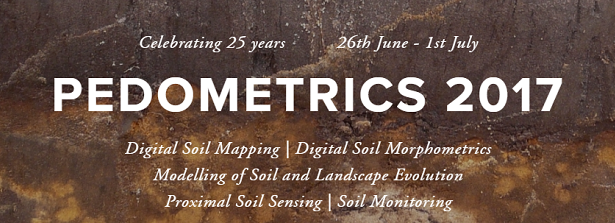
The first Pedometrics conference was organized in Wageningen in 1992. To mark the occasion of its 25th anniversary, the Pedometrics community will again assemble in Wageningen this year, from June 26 to July 1, 2017.
The conference will have a plenary afternoon session fully dedicated to the 25th anniversary. The program includes lectures that look back and ahead, an anniversary Pedometrics quiz and a very special group photograph.
Pedometrics
Pedometrics is a branch of soil science that applies mathematical and statistical methods for the study of the distribution and genesis of soils.
The goal is to achieve a better understanding of the soil as a phenomenon that varies over different scales in space and time. This understanding is important, both for improved soil management and for our scientific appreciation of the soil and the systems (agronomic, ecological and hydrological) of which it is a part. For this reason much of pedometrics is concerned with predicting the properties of the soil in space and time, with sampling and monitoring the soil and with modelling the soil’s behaviour.
Pedometricians are typically engaged in developing and applying quantitative methods to apply to these problems. These include geostatistical methods for spatial prediction, sampling designs and strategies, linear modelling methods and novel mathematical and computational techniques such as wavelet transforms, data mining and fuzzy logic.
Conference 2017
Pedometrics began as a Working Group of the International Union of Soil Sciences (IUSS) in 1992 that was promoted to an IUSS Commission in 2004. Since this time, the Pedometrics Comission has been very supportive of the creation of new Working Groups, leading to the Pedometrics 2017 to be hosted as a joint meeting of the Pedometrics Commission and five of its associated Working Groups.
For more information on the congress, please visit the website.
- This event has passed.

